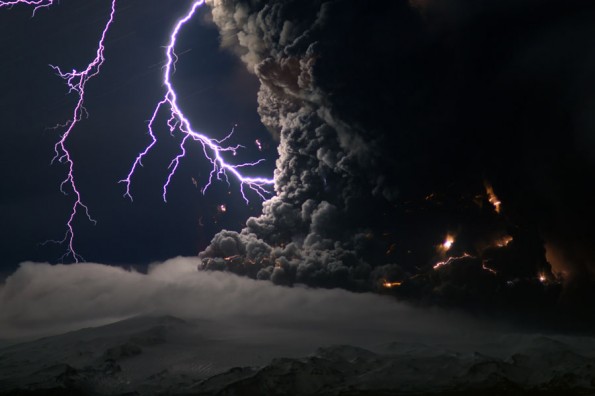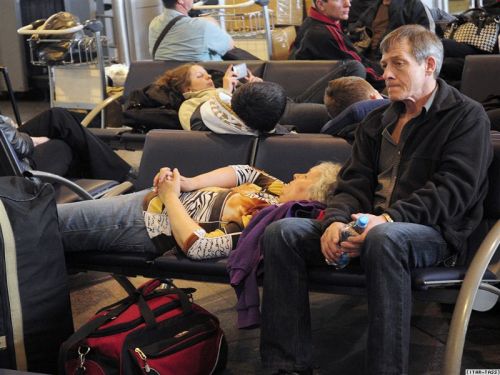 [Icelandic Eyjafjallajokull volcano. Image via Vizworld]
[Icelandic Eyjafjallajokull volcano. Image via Vizworld]
Storms, earthquakes, floods, and more recently volcanoes, show that geologic force, as Friends of the Pleistocene have put it, has become vividly contemporary again.
FOP presents a comparison to geologic erratics, displaced rock left behind by glaciers, and in many cases like the Doane Rock of Eastham MA, quite large, to the displacement of humans due to environmentally caused flight disruptions. The eruption of Eyjafjallajokull in Iceland grounded thousands of flights in Europe leaving human erratics stranded and strewn about their airports. Its as though the volcano had little concern with our schedules and travel arrangements, and as volcanic heat continues to combine with glacial ice, more eruptions are likely. After finding out that they to would be stranded in Spain FOP wrote:
At that point, we began to suspect that erratic was taking on a broader, more experiential definition for contemporary life for thousands of people. Might erratic aptly describe the current status of human / geologic relationality? Given that our fragile infrastructures rely increasingly on a need for geologic forces to remain stable and oddly unchanging–perhaps erratic becoming the new norm. Air travel, one of the most monumental achievements and inventions of humankind, had transported us easily 3600 miles across the ocean just a few days before. Now, suddenly, it was rendered useless.
 [Erratics: A Genealogy of Rock Landscape. Image: Vignette - bedrock on beach, CCAP, January 2008 Courtesy Claude Cormier Architectes Paysagistes]
[Erratics: A Genealogy of Rock Landscape. Image: Vignette - bedrock on beach, CCAP, January 2008 Courtesy Claude Cormier Architectes Paysagistes]
The discussion of environmentally caused human erratics or affected by, brings to mind some of the Glacier/Island/Storm writings curated by BLDGBLOG and contributions from the likes of Mammoth and Infranet Lab, among others. Human interaction/encroachment/engagement and vice versa is creating an ever evolving dynamic between man and nature. Through architecture and infrastructures, and now atmospheric geo-engineering, we have shown that we can impact earth's processes, but given a long enough time frame, the planet will always end up the victor.
 [Contemporary erratics. Image via Friends of the Pleistocene]
[Contemporary erratics. Image via Friends of the Pleistocene]
But as populations grow, and as extreme natural cataclysmic events continue, the prevalence of human erratics, or environmental refugees would seem to become commonplace in our cultures and thus necessitate future planning schemes for such. Imagine the displaced erratics of Hurricane Katrina reaching a continuous global scale, how would cities prepare?
FOP pointed to Michio Kaku’s words in The Wall Street Journal as a timely reminder: Humans need to find ways to move in accord with geologic time and force, not in spite of their unpredictability, but because of them – and because of our deep entanglement with them:
“Unfortunately, our institutional memory lasts a few decades at most, while the cycles of mother Earth are usually measured in centuries or millennia. So for the future we have to appreciate that we humans will be pushed around like pawns as the earth slowly but inexorably changes and shifts.
We may think of volcanoes now as villains. But they are also givers of life. Much of the air we breathe and the ground we walk on can be traced back to ancient volcanic eruptions. And the extinction of the dinosaurs 65 million years ago (which paved the way for the coming of humans) might be traced back to a one-two punch caused by an asteroid collision and simultaneous volcanic eruptions.
The fact that humans are about 99.9% genetically identical could, according to one theory, be traced back to the Toba eruption in Indonesia roughly 70,000 years ago. That eruption might have killed off most of the human race, leaving only a few hundred of us to populate the planet. We might, therefore, owe our evolution and very existence to volcanoes.”–Michio Kaku
